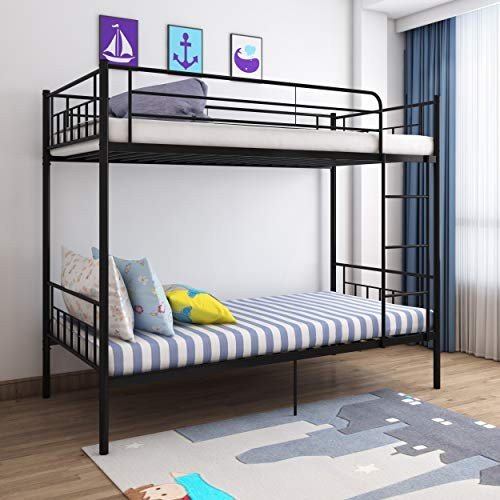
The Ultimate Guide to Bunk Beds in the UK: Trends, Safety, and Benefits
Bunk beds have ruled supreme on the planet of kids's furniture for many years. Their dual performance, capability to save space, and unique charm have actually made them a desirable alternative for families throughout the UK. As families grow and space ends up being a premium, bunk Bed uk beds develop to satisfy different requirements, looks, and safety concerns. This short article explores the patterns, advantages, safety problems, and factors to consider of acquiring bunk beds in the UK.
Table of Contents
- Introduction
- Popular Bunk Bed Designs
- Benefits of Bunk Beds
- Safety Considerations
- Maintenance of Bunk Beds
- FAQs
- Conclusion
1. Introduction
Initially created for taking full advantage of space in little bedrooms, bunk beds have grown to incorporate a variety of styles and functionalities. From conventional wooden models to modern-day loft beds with integrated storage, the marketplace in the UK provides a wide variety of options for parents and kids alike. This versatility appeals not just to those with space constraints however likewise to families trying to find stylish furnishings that can accompany kids as they grow.
2. Popular Bunk Bed Designs
Bunk beds are available in a variety of designs dealing with various tastes and requirements. Here are some popular styles discovered in the UK market:
| Design Type | Description |
|---|---|
| Conventional Wooden | Classic style; readily available in numerous finishes; tough and ageless. |
| Metal Bunk Beds | Lightweight, often with a contemporary or commercial appearance; simple to move. |
| Loft Beds | Raised beds that offer below space for desks, storage, or play. |
| Futon Bunk Beds | A mix of a futon and bunk bed; ideal for multi-purpose spaces. |
| L-Shaped Bunk Beds | 2 beds placed in an L-shape; great for optimizing corner spaces. |
3. Advantages of Bunk Beds
Buying a bunk bed provides numerous advantages:

- Space-saving: Bunk beds are ideal for small bedrooms, permitting 2 kids to share a space without sacrificing space.
- Flexibility: Many bunk beds include features such as pull-out trundles, desks, or storage drawers, making them multifunctional.
- Motivates Sharing: Bunk beds can foster a sense of companionship and sharing among siblings or friends.
- Stylish Aesthetics: With numerous designs available, bunk beds can work as a stylish addition to a bedroom rather than simply a functional furniture piece.
- Economical: Instead of acquiring 2 beds, a bunk bed enables more cost-effective use of space while accommodating more children.
4. Safety Considerations
When it comes to bunk beds, safety is paramount, especially for younger children. Here are some vital security tips:
- Choose tough building and construction: Look for bunk beds made from solid wood or heavy-duty metal to guarantee durability.
- Make sure correct height: The leading bunk should adhere to security requirements, normally having at least 16 inches of guardrail on the side.
- Check weight limits: Ensure the bunk bed supports the weight of the desired users conveniently.
- Use the right bed mattress: Use bed mattress sizes that fit snugly within the bed frame to prevent gaps where a child might become trapped.
- Establish rules: Make sure children understand the guidelines of bed use, such as no leaping and just one individual on the leading bunk.
5. Upkeep of Bunk Beds
Bunk beds need regular maintenance to guarantee they remain safe and functional. Here are some upkeep suggestions:
- Regularly examine hardware: Check screws and bolts to guarantee they stay tightly secured and safe.
- Clean mattresses: Regularly vacuum and spot tidy mattresses to preserve hygiene.
- Prevent overcrowding: Make sure the bed is not overwhelmed with toys, clothing, or other products.
6. Frequently asked questions
Q1: What age is ideal for children to sleep in bunk beds?A1: Most
specialists suggest that kids under the age of six must not sleep on the leading bunk due to safety concerns relating to falls.
Q2: Can bunk beds fit in any space size?A2: While bunk beds
are developed to save space, they still require enough ceiling height for security. Generally, a space should have at least 7.5 to 8 feet of ceiling height. Q3: Are bunk beds safe for toddlers?A3: While some bunk beds are developed particularly for young children,
most experts recommend that children under the age of 6 must utilize the bottom bunk for security. Q4: How do I clean a bunk bed?A4: Regular cleansing can be done using a wet fabric for the wood or
metal surface areas. Mattresses must
be vacuumed and cleaned up according to maker instructions. 7. Conclusion Bunk beds have become a renowned furniture piece for children's spaces in the UK, using an ideal blend of functionality, design, and space-saving capabilities. With different styles and benefits, bunk beds cater to families of all sizes and requirements. However, security ought to always be top of mind when thinking about these kinds of beds. By making informed choices and keeping your bunk bed appropriately, you can make sure that it stays a cherished piece of furniture for many years to come. As bunk beds continue to evolve, they provide more than simply a sleeping plan-- they produce memories and foster relationships, proving to be a vital addition to British
homes. This thorough guide intends to equip prospective purchasers with valuable insights into the world of bunk beds in the UK, guaranteeing that they make notified options that focus on both functionality and safety.








